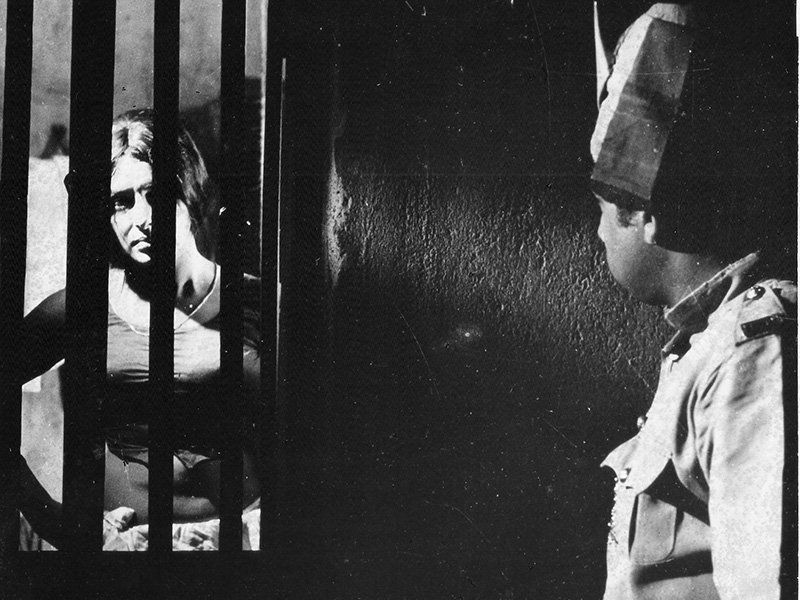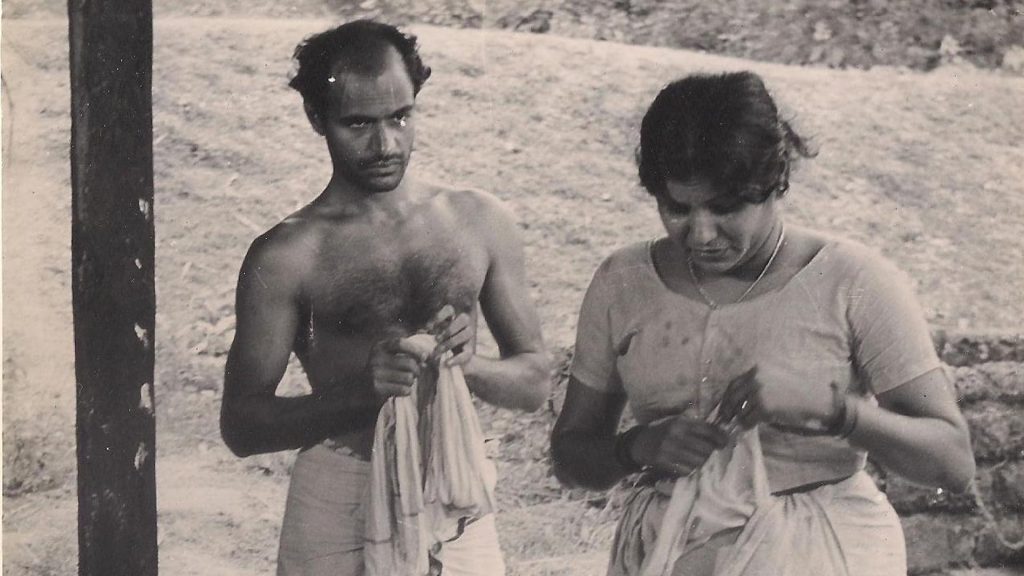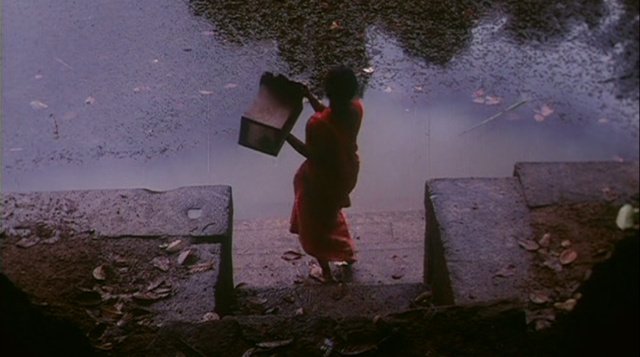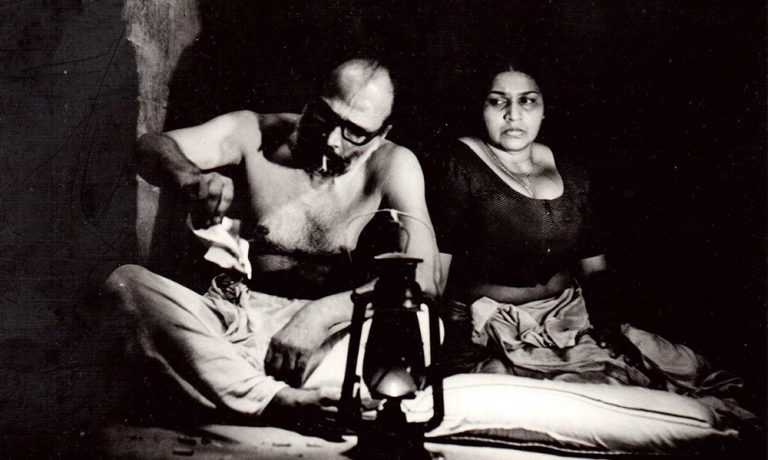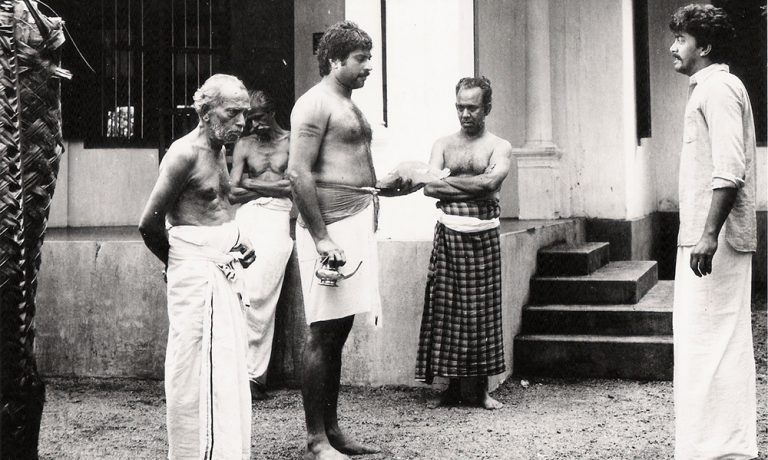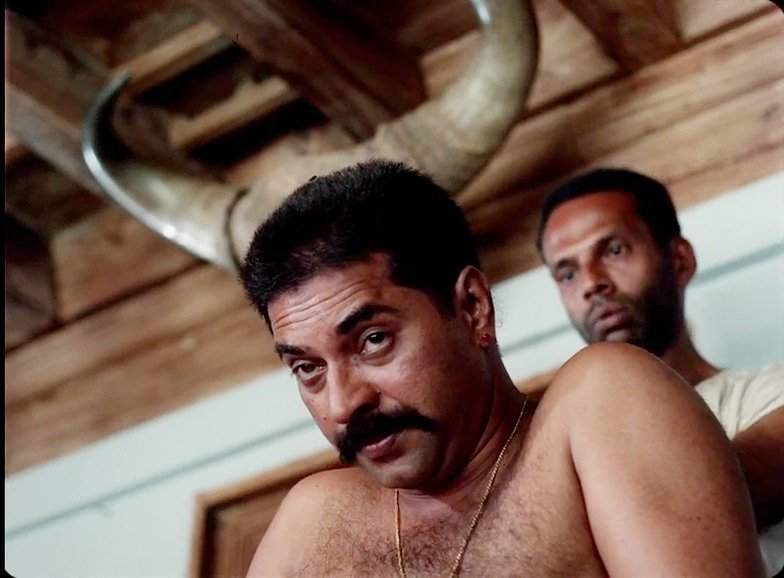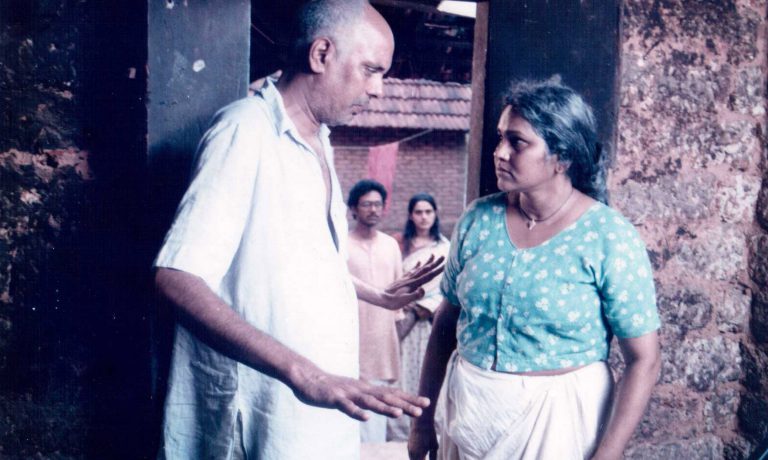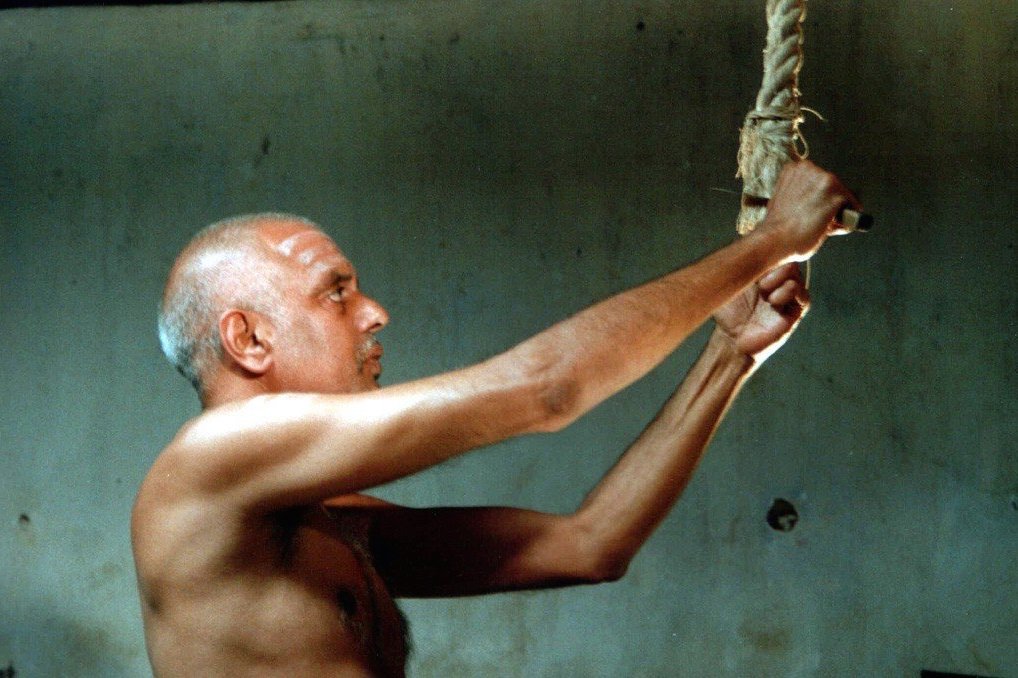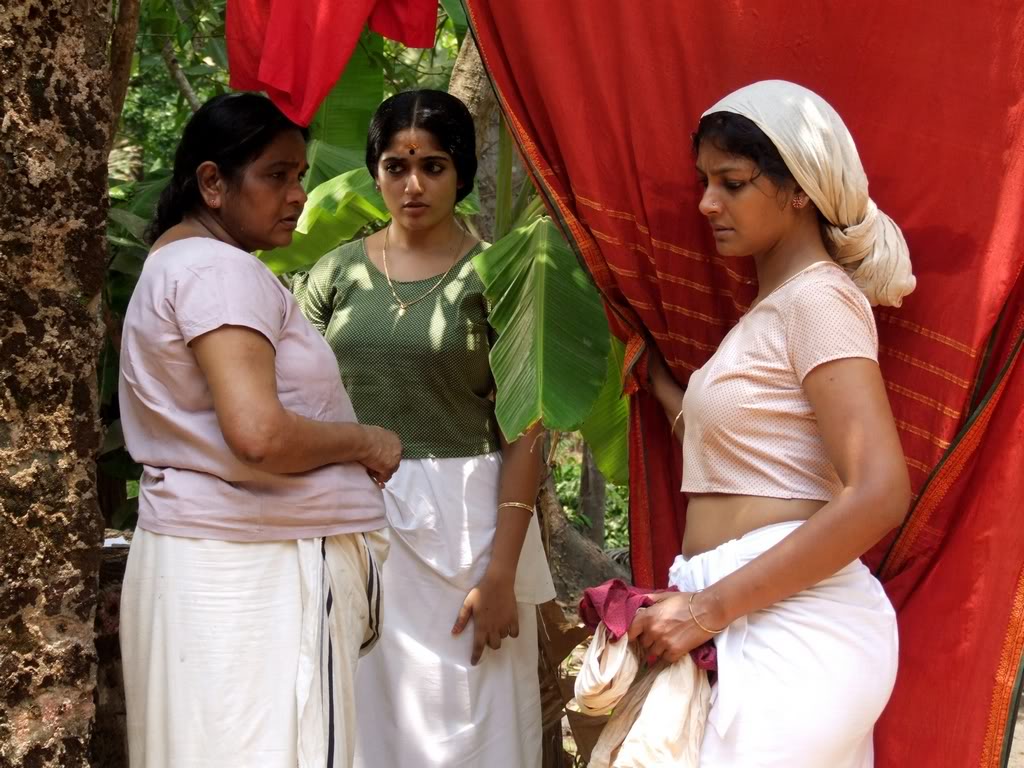With the global success of Lijo Jose Pellissery’s ‘Jallikattu’ (2019), contemporary Malayalam cinema can boast of pushing the boundaries of conventional cinema, and filmmakers from the region with unique storylines are becoming more the norm than the exception in the film industry, which could now proudly declare to the world its creative dominance. But if we trace the history, the rich tradition of quality and thought-provoking filmmaking practices in Kerala has always been prevalent. When the so-called parallel filmmaking movement was thriving in our nation, filmmakers from Kerala played a crucial role in enriching the culture of such creative endeavors. One such filmmaker was Adoor Gopalakrishnan, whose debut feature film Swayamvaram (One’s Own Choice, 1972) heralded the New Wave in Kerala. He is often described as Satyajit Ray’s worthy successor and regarded as India’s most distinguished art-house filmmaker. His filmmaking style usually involves long takes and prolonged moments of silence that help establish a pattern that follows the characters’ reactions to various situations and changes in a subtle way.
The deliberate slow pacing combined with the minimalism within the frame gives the viewer the impression of the film’s characters caught up in the vortex of a bygone period. The skillfully structured sound design of the film essentially highlights the symptomatic effect in the realm of the film’s narrative pattern. The ambient sound of the scenes helps the characters to gel harmoniously with the thematic fabric of the film. His movies are nuanced and rooted in people’s lives, taking his viewers into the households of his native Kerala, high and low, but mostly in between.
Psychological and sensory acuity, humor and humanism, and deep appreciation of family and relationships are key themes of his cinematic creations. These elements were sufficient to allow him to create a kind of realism, which very few Indian filmmakers have achieved and have made a place for themselves within the domain of world cinema. He has won multiple National Film Awards in India and has been part of some of the major festivals worldwide. France has also conferred him with the Legion d’honneur. In the year 2004, he was awarded the Dadasaheb Phalke Award.
HERE’S A LIST OF THE 10 MOST ESSENTIAL ADOOR GOPALAKRISHNAN MOVIES FOR EVERY CINEPHILE:
1. Swayamvaram (One’s own choice, 1972)
Adoor Gopalakrishnan’s debut feature film narrates the tale of a couple, Vishwam (Madhu) and Sita (Sharada), who have married against the liking of their families and have eloped to the city in search of love and a new life. Vishwam aspires to become a writer and publish his novel. But to survive in the city, both the couple starts looking for a job. They fail in their attempts to find work and the romantic idea of a life away from the strictures of their families is shattered. The everyday existence of their day-to-day life becomes their bone of contention. They have to make one compromising choice after the other and in the process get embroiled in a tight spot.
The quest for economic survival for the two helpless souls is also dampened because they are outsiders in the city. Their internal struggle of existence also highlights the repercussion of their choices. It can be read as a kind of strife that existed between the developing and autocratic forces within the social fabric of society. At the end of the film, Vishwam dies, leaving Sita in the lurch with their baby.
In the final shot of the film Sita feeding her baby cast her glance at a closed-door, which symbolically comments on the socio-economic and moral crisis of the middle class and the consequences of one’s own choice. For the year 1973, Adoor Gopalakrishnan received a nomination at Moscow International Film Festival, Russia. The film also went on to win National Film Award for Best Feature Film, Best Director, Best Actress, and Best Cinematography. It also won Kerala State Film Award for Best Photography (Black-and-white) and Best Art Direction.
Watch Adoor Gopalakrishnan’s debut film on YouTube
2. Kodiyettam (The Ascent, 1977)
The second feature film of Adoor Gopalakrishnan narrates the story of growth and development of the principal character of the film Shankarankutty (Gopi), who at the beginning of the film is a free soul whose childhood had got extended a bit longer. His somewhat delayed maturity has somehow become an essential trait of his persona. He idly spends his life at the teashop in the morning and at the toddy shop in the evening. He takes delight in accompanying the young boys of the village in their frisky liveliness of fishing and climbing coconut trees.
In one particular scene, he is seen running after a kite whose thread had been cut. Along with the young boys, he runs from the fields and lanes of the villages and finally finds the kite to have descended into a canal. The entire futility of the effort highlights the waywardness of the character. Attending village festivals, eating, and sleeping emphasizes the careless features of the protagonist. He is even ready to participate in any political rally that provides him with the promise of free alcohol and money. But as the events in the film unfold the arc of the character displays exponential buildout. It initiates with Shankarankutty becoming the helper of the truck driver (Aziz). He is still in a state of drunkenness from the previous night’s episode with the elephant keeper and vomits as the truck is traversing in the road.
The truck driver asks him to clean up and also fill up water in the engine as his first lesson as a cleaner. The truck driver arrives and witnessing the puzzle state of his helper. In a state of utter amazement, the truck driver utters ‘Fool! Should I teach you how to pour water, and then shows Shankarankutty the correct spot to pour the water’. So the presence of the truck driver and Shankarankutty’s journey in the vehicle serves as a medium through which the character will be attaining maturity. Shankarankutty later grows a moustache which symbolizes the attainment of manhood and evolvement as a caring husband for his estranged spouse.
The film heralded the debut of Malayalam actor Gopi, whose unconventional appearance did not appease the preconceived notions of the theatre owners’ notion of quintessential resemblances of a matinee idol. But the film somehow got released in few theatres and went on to become a success. It was the first film of Adoor Gopalakrishnan, which Satyajit Ray saw at the 1979 International festival in Delhi and he enjoyed every minute of the film. The film went on to win the National film award for Gopi as Best Actor and the Best feature film in Malayalam.
Watch the movie on YouTube
3. Elippathyam (The Rat-Trap, 1981)
This is the first film of Adoor Gopalakrishnan to be shot in colour. The film can be arguably christened as one of the best films from the oeuvre of the director’s filmography. The film has minimal usage of dialogues and does not follow the conventionally popular narrative structure. Rather it takes the shape of an episodic form of storytelling emphasizing the progression taking place in the lives of the characters trapped within the domain of ancestral inheritance of feudalistic behaviours. The film is also a poetic expression of human beings caught within the scraps of ancient time that once was an integral part of their social identity. The firm and unrelenting restrain on the tempo has given the film a cinematic idiom that is both austere and cerebral.
Unni (Karamana Janardanan Nair) is the only male heir of the sprawling ancestral house of the rural Kerala of the 1960s. He lives with his two unmarried younger sisters Rajamma (Sharada) and Sridevi (Jalaja), in a household whose source of income are the paddy fields and coconut trees. The film begins at the point when the government has promulgated the abolition of feudalism and the once-powerful feudal land-owning family is on the verge of decline.
The opening shots of the film highlight certain visual elements, which are the resemblances of a feudal establishment- the ancient iron key, a wall clock, the heavy carved door, an oil lamp, the elaborately carved timber of the celling. We then move into the exterior as well as the interior space of the household, which emphasis on the various architectural structures. The juxtaposition of the various shot evokes a montage. The symbolic representation of the clock suggests stagnancy in the life of the characters for which time has stood still and the inhabitants of the world outside had made advances with their life. Even the confinement of the house acts as a metaphor for a rattrap for the characters of the film.
The British Film Institute awarded the film with the Sutherland Trophy for the most original and imaginative film of 1982. Adoor Gopalakrishnan became the second Indian filmmaker to have won this award after a span of 23 years. The first Indian to have won this award was Satyajit Ray for Apur Sansar (The world of Apu, 1959). So far no other Indian Filmmaker has won this award, yet. The film was also shown at various international film festivals of the world such as Cannes (Non-competitive section), New York, Sao Paulo, Nantes, and Paris, etc. The film also won the national award for the best feature film in Malayalam and the Best audio-graphy award, besides three other Kerala State Film Awards.
Watch the movie on YouTube
4. Mukhamukham (Face to Face, 1984)
The narrative of the film begins in the early part of the 1950s, when we watch Sreedharan (P. Gangadharan), a trade union activist who believes in communism, participating in a strike against the owner of a tile factory. Later in the film, the political situation spiral out of his grasp, and he is compelled to go underground after his name gets embroiled with a murder. For a good length of time in the film, he is considered to be dead and even a memorial gets erected in respect of the leader.
The film takes an unexpected twist with the return of the protagonist from his hideout after a decade, in the second half of the film. Sreedharan’s miraculous return allows his family and his followers at once to turn to him for guidance and brawn, but the present Sreedharan ceased to be his former self. He is now a shadow of his former self. However, the dispirited members of the community instead of opening up their eyes and confronting the current issues, pin-up their hope on their hopes from the former leader and in the process suffers from their myopic attitude.
He binges on alcohol and sleeps like a log causing perplexity and mortification amongst his followers and family members alike. As the reputation of the protagonists tarnishes he is murdered under mysterious circumstances. The film ends with the dead Sreedharan now given the stature of a hero and both the political parties jointly celebrate his demise and paint him as martyrdom.
The film can be considered Adoor’s most political film to date, where the viewers observe within its complex narrative structure how corruption had seeped into the framework of the Communist Party as the individuals previously associated with the ideology start blaming the intention and ethics of each other. The unanimity amongst the members weakens and their belief in the pursuit of political perfection shatters. For the year 1984, the film had won the National Awards for Best Direction, Best Screenplay, Best Audiography, and Best Malayalam Film. And the Kerala State Awards for the Best Film, Best Direction, Best Cinematography, Best Audiography, and Best Editing.
5. Anantaram (Monologue, 1987)
The film narrates the succession of events told from told in the first person narrative by the protagonist of the film Ajayan (Ashokan) who is an orphan by birth. He shares his thoughts and memories to the viewers that give rise to events told that progresses through sequences, which are not linear in the conventional terms and somewhat fragmented like the brittle psyche of our protagonist.
It is a kind of film that tells a story about story-telling and can be considered as a complex and original form of narrative. As the protagonist narrates his life it offers the viewers an option to probe into the mind of the troubled soul who designs the truth in accordance to his benefit or at his whims and fancies to pacify himself.
At the National film award for 1987, the film had won awards for Best Director, Best Screenplay, and Best Audiography. And the Kerala State Award for Best Director. It has also won the International Film Critics Prize (FIPRESCI) for the Best film, Karlovy Vary Film Festival. Anantaram is clearly one of the best movies of Adoor Gopalakrishnan.
Watch the movie on YouTube
6. Mathilukal (The Walls, 1990)
The film is one of the first adaptations by Adoor Gopalakrishnan in his oeuvre of a filmmaking career. The novella of the same name as the title of the film is written by the celebrated Malayalam writer Vaikom Muhammad Basheer and has autobiographical elements. The milieu of the film is set against the background of India’s freedom struggle in the 1940s. The events in the film unfold within the restricted narrow area of the prison, where the protagonist Bashir (Mammootty), develops an attraction towards a fellow woman prisoner, Narayani, who is on the other side of a wall.

Due to the presence of the wall, they are never able to meet each other and it is through their conversations that they develop a bonding with one another. But fate had something else in store for the protagonist and he is not able to unite with his ladylove. Throughout the narrative, the prison acts as space, which encapsulates in miniature the characteristics of the society outside the sphere of the prison. At the National film award for 1989, the film had won awards for 1989, the had won awards for Best Director, Best Actor, Best Sound, and Best Malayalam film. At the Kerala State Award, it won the award for Best Story. It also won the International Film Critics Prize (FIPRESCI) at Venice.
Watch the movie on YouTube
7. Vidheyan (The Servile, 1994)
The film is an adaptation of a novella by Malayalam writer Paul Zacharia and narrates the tale of an unimpeachable labourer from Kerala, Thommy (M.R.Gopakumar) who has shifted to neighbouring South Karnataka in search of a better life. In the village, he, unfortunately, encounters the cruel and oppressive landlord Bhaskara Patelar (Mammootty), who exploits him without an iota of pity.
Pattelar even sexually abuses Thommy’s wife but he does not accept resigning to his excessive willingness to serve his master. Thommy also helps Patelar in murdering his wife Saroja and makes it appear like a murder. But the bad karma of Pattelar brings evil consequences in his life and he is eventually killed and Thommy regains his freedom.
Related to Adoor Gopalakrishnan: 25 Greatest Malayalam Films of All Time
The film comments on the primitive mindset of ex-feudal landlords who are under the illusion of having the power of still exerting their power over the oppressed forgetting that their contemporary society has undergone a seismic shift of dominance. Holding their pride close to their chest, these individuals are not in a position to turn down their egos and negotiate themselves into present norms of the society where feudalism is an extinct entity. At the National film award for 1993, the film had won awards for Best Actor and Best Malayalam film. Whereas, at the Kerala State awards for Best Film, Best Director, Best Actor and Best Story, Special award in acting for M.R.Gopakumar.
Watch the movie on YouTube
8. Kathapurushan (The Man of the Story, 1995)
This is one of the most monumental films of Adoor Gopalakrishnan’s career in terms of its narrative scale of the unfolding of the events. The viewers observe the changes in the political arena of the nation through the experiences of the protagonist Kunjunni (Vishwanathan) who takes birth in 1937 and witnesses important political phase of the country and society in transition such as India’s independence, Gadicndhi’s assassination, Communist rule in Kerala, land reforms, the Naxalite movement and the Emergency during Indira Gandhi’s prime ministership and in the process he finds himself developing a mature outlook towards the society with a renewed vision.
One of the most important aspects of the film is the portrayal of how demarcating lines of class division is blurred. Meenakshi (Mini Nair) happens to be a childhood friend of our protagonist and belongs to the family of a servant. But that does not stop Kunjunni, who is an heir to the feudal landlord, from marrying her. Thus the hierarchy of the society is infringed as the country heads towards beginning another glorious political chapter. The film had won the National Awards for Best Film and Best Supporting Actress and the Kerala State awards for Best Director, Best supporting actor and best-supporting actress.
9. Nizhalkkuthu (Shadow Kill, 2002)
Made after a gap of seven years, Nizhalkkuthu is a poignantly narrated tale of a poor old and the last hangman, Kaliappan (Oduvil Unnikrishnan), in the princely state of colonial Travancore set in the 1940s. As the plots unfold the son of the executioner, Narain (Muthu), who believes in the principles of Mahatma Gandhi, is saddled with the responsibility to stand in for his father. The title of the film represents an episode from the Indian epic Mahabharata.
Throughout the film, the quandary is concerned with the principles of right and wrong behaviour and reflexively delves into narratives the power of the human mind to invent realities that are more real than reality itself. The film also presents an intriguing imputation on the practice of capital punishment. At the National film award for 1993, the film had won awards for Best Film in Malayalam. At the Kerala State Awards, it won Best Actor, Best Cinematography, Best Editing, Best Sound, Best Costumes, and Best Supporting Actor.
Watch the movie on YouTube
10. Naalu Pennungal (Four Women, 2007)
The film can be considered as a collection of four stories, that are not interconnected directly, about four women each of them belonging to a different rung of the society in Kerala. The late Thakazhi Sivasankara Pilla wrote all four stories. The first story is titled ‘Oru Niyamalanghanathinte Katha’, where Kunjipennu plays the role of a street prostitute Padmapriya, in the second story, titled ‘Kanyaka’, where Geetu Mohandas plays a peasant girl Kumari, in the third story titled ‘Chinnu Amma’, Manju Pillai plays the role of a middle-aged homemaker named Chinnu and in the final story titled ‘Nityakanyaka’, Nandita Das, who is a girl from an affluent family makes a firm choice not to get married.
Such stories set forth a plethora of questionings, conflicts, transformations, and refinements through which feminist values have evolved in society. We can also say that the film is a constant search by the four protagonists who had to deal with complex issues like ousting, luxation, and the dependent nature of an abode. And such a societal feature constitutes the core of the narrative. At the 55th National Film Awards, the film had won awards for Best Director (Adoor Gopalakrishnan) and Best Editor.

